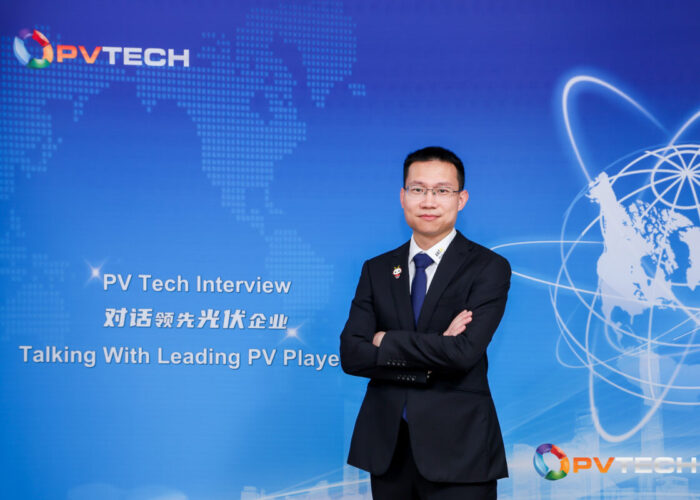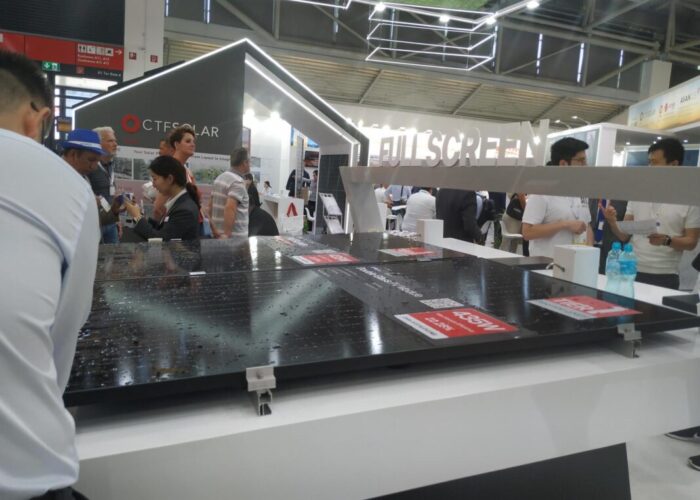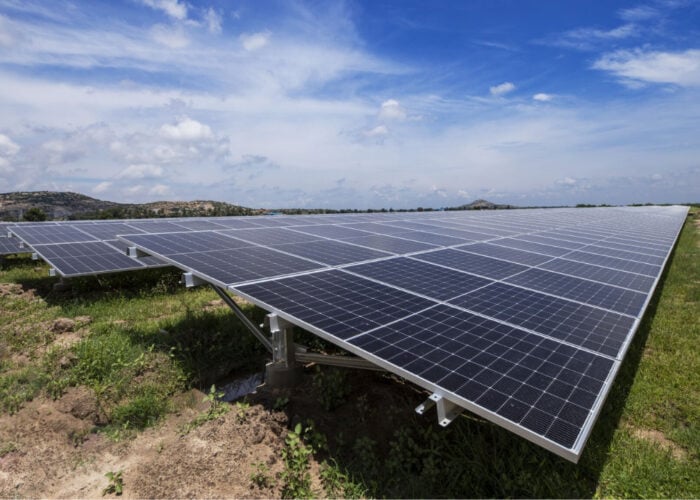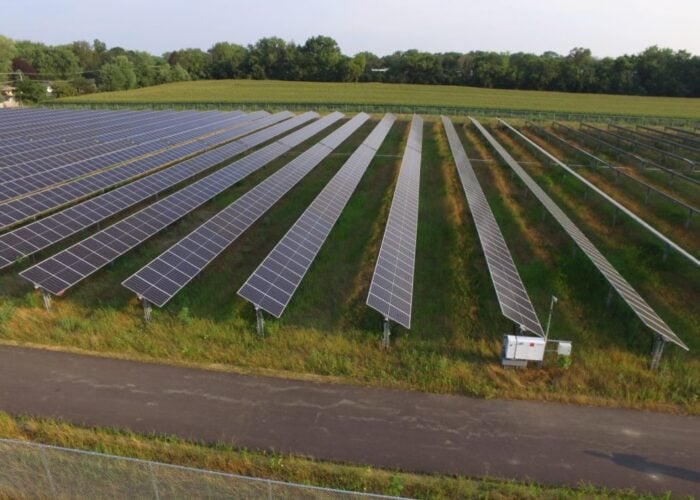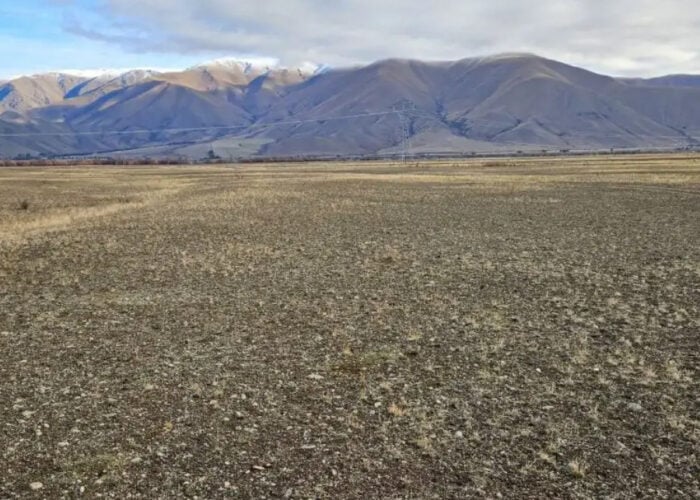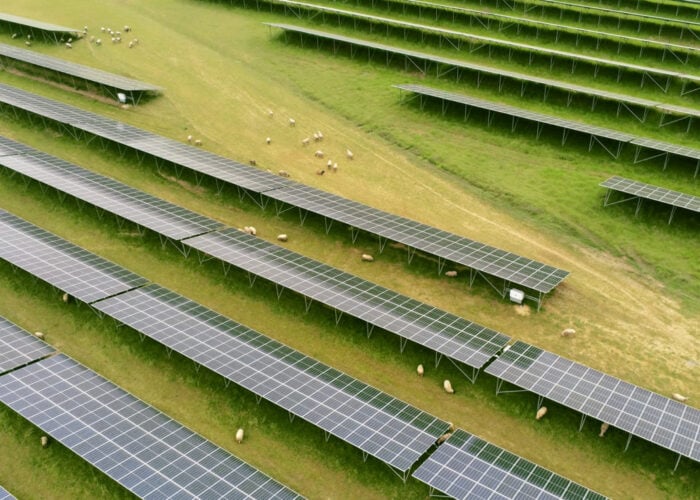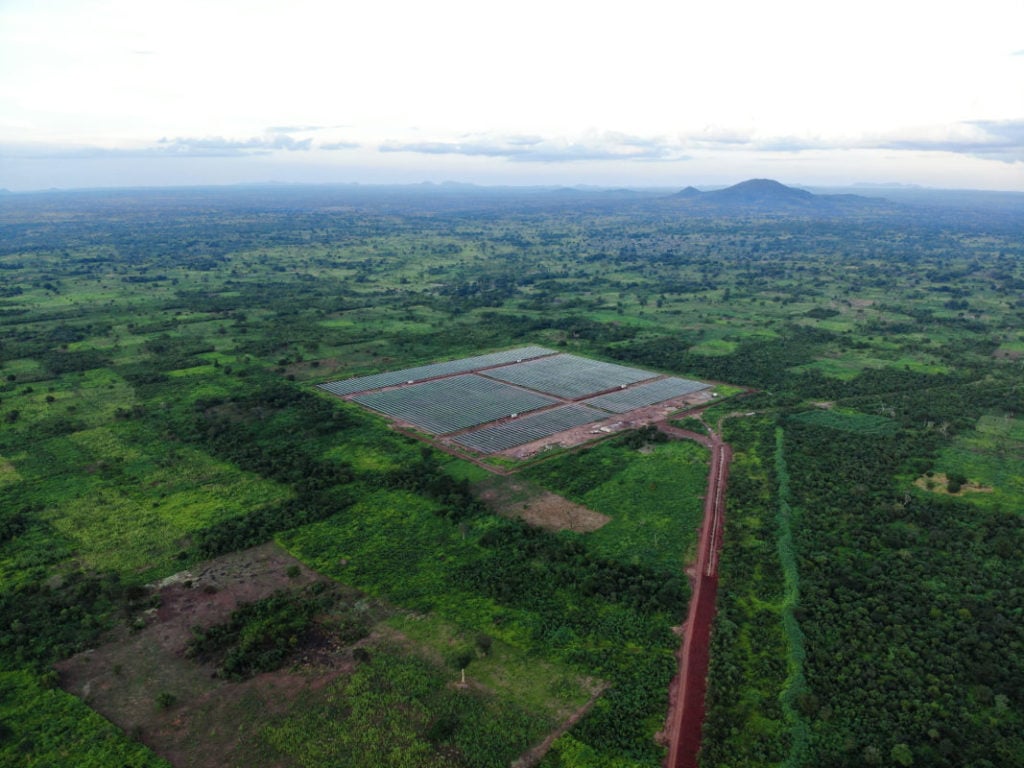
The potential of solar power in Africa is beginning to be realised, with 2023 seeing record levels of deployment. JP Casey explores some of the latest trends shaping the continent’s solar sector, where the C&I segment in particular is surging ahead.
Much has been made of the potential for the solar sector across Africa, not least because of the region’s considerable solar reserves and pressing demand for electrification. According to the International Renewable Energy Agency (IRENA), in 2021, high levels of sunlight in Africa meant that it accounted for 40% of the world’s solar power generation potential but generated just 1.48% of its electricity from solar sources.
Unlock unlimited access for 12 whole months of distinctive global analysis
Photovoltaics International is now included.
- Regular insight and analysis of the industry’s biggest developments
- In-depth interviews with the industry’s leading figures
- Unlimited digital access to the PV Tech Power journal catalogue
- Unlimited digital access to the Photovoltaics International journal catalogue
- Access to more than 1,000 technical papers
- Discounts on Solar Media’s portfolio of events, in-person and virtual
Or continue reading this article for free
African countries are also among some of the most likely to experience a spike in energy demand in the coming years. In 2022, the International Energy Agency (IEA) reported that between 2020 and 2030, Africa is likely to see its energy demand jump by a third, putting pressure on the continent’s governments to expand their power-generation facilities.
With this in mind, the most recent edition of the Africa Solar Industry Association’s (AFSIA) annual report on the state of the continent’s solar sector makes for some encouraging reading. In 2023, Africa added 3.7GW of new solar capacity in 2023, a record figure. This marks four consecutive years of growth in the African solar sector, from 0.9GW of capacity additions in 2020 to 1.1GW in 2021 and 3.1GW in 2022, and suggests that there is interest both in agreeing to build, and actually breaking ground, on new solar projects in the continent.
However, with many of the obvious challenges present for such a rapidly developing power sector, including the resilience of local power grids and the ability of various governments to effectively regulate this rapidly changing energy mix, continuing this streak of record capacity additions, and building a resilient renewables sector for Africa as a whole, loom large as challenges for the future.
South Africa dominates capacity installations
Perhaps the most striking aspect of the African solar sector is the extent to which South Africa dominates the industry. In 2023, AFSIA notes that South Africa added 2.9GW of new solar capacity, pushing its total installed solar capacity above 7GW. This figure accounts for close to half of Africa’s total installed solar capacity.
“We’re seeing a lot of growth, especially across the largest economies, such as South Africa and Kenya,” says James Shoetan, chief commercial officer at CrossBoundary Energy, a renewable energy developer based in Kenya with projects across a number of African markets.
This emphasis on larger markets explains much of the interest in the South African solar sector in particular, as this is a country with significant renewable power targets and robust legislation that aims to encourage investment in new clean power projects. The South African government released its Integrated Resource Plan, setting out a framework for the country’s energy mix, in 2010, and the following year, new definitions for power purchase agreements and independent power producers were passed, vital steps in encouraging large-scale private investment into the South African solar sector.
“A lot of this is driven by strong solar radiation, electricity supply and cost dynamics, of which the latter tends to be the biggest driver,” says Shoetan, who adds that, in South Africa, there is a business case for many of these investments. “We have seen that, with solar, you can compete with the vast majority of grid prices in Africa because some of them are really high.”
South Africa also has an outsized impact on the rest of the African solar sector, as the more mature status of its market means other countries’ sectors are often following in its wake.
“In South Africa, which saw more than 2GW of new commercial and industrial (C&I) capacity installed in 2023, C&I is embraced by the entire economy as a result of load-shedding, which is plaguing the country,” says John van Zuylen, AFSIA CEO, whose organisation’s report draws strong parallels between South Africa individually and the African solar sector as a whole. “Hundreds of businesses have had no other choice but switch to solar to continue their operations.”
This relationship is perhaps the clearest in terms of capacity additions. As the graph below demonstrates, using AFSIA figures, save for a three-year period in the late 2010s, South Africa’s capacity additions have been the driving force behind capacity additions in the whole of Africa, to the point where, in 2023, South Africa accounted for more than 75% of the continent’s newly installed solar capacity.
Grid challenges in South Africa
However, this is not to say that the South African solar sector is not without challenges that will need to be overcome for both the benefit of South Africa, and the rest of the African solar sector, which will look to follow in its footsteps.
A key challenge is one of scale, and expanding the solar sector from one that accounts for a small portion of the country’s energy mix to one that is making a significant contribution to South African power.
According to the US International Trade Administration, as of 2023, 80% of South Africa’s energy demands were still met by coal-fired power plants, and addressing these macro challenges for the sector, from reducing reliance on fossil fuel generation to building the necessary grid infrastructure for renewables to take their place, hang over the industry.
“The main question is to see at what speed these grid improvements and largescale projects can be developed and built, while on the other side C&I gets cheaper every day and can be installed very rapidly,” says Van Zuylen, pointing out that, while solar is an attractive investment, scaling up solar will have to be done quickly and effectively.
Solar in the mix
Beyond South Africa, both Shoetan and Van Zuylen suggest that solar could form part of a more diverse energy mix for the entire continent. This approach could reduce the stress on the solar sector in particular, as solar developers are not put in a position where they are expected to make up for the entirety of Africa’s lost fossil fuel generation capacity, but just one part of a more diverse energy mix.
“What I think is that you will see some wind,” says Shoetan. “We’re also doing wind, where it makes sense. One of our coolest projects is for Rio Tinto in Madagascar; what we’re doing [is] wind plus solar plus batteries, all integrated with their existing generator fleet, to bring them up to 70% renewable contribution in the future.”
Thanks to new and efficient storage solutions, there is indeed hope that largescale solar-plus-storage plants can be built across the continent in the near future,” agrees Van Zuylen. “Without storage, it would be practically impossible to add a consequent number of large-scale solar projects in most African countries because of the weakness of the transmission and distribution grid. But storage can remedy this problem for the main part.”
Van Zuylen also suggests that many of the off-grid benefits of solar investment in South Africa are applicable to Africa more broadly, with solar an opportunity for those in countries with less developed grid infrastructure to help meet energy demand. Off-grid power supply has seen considerable domestic and international interest in recent years, with the World Bank estimating that, between 2000 and 2023, the number of mini-grids in operation across Africa has increased from 500 to 3,000.
Similarly, projects such as the European Investment Bank and ENGIE’s Energy Access programme, and the USAID’s Power Africa initiative, look to draw international investment towards new power programmes in Africa.
“Several regional power pools have also made significant progress recently, most notably in West Africa,” explains Van Zuylen. “These power pools also act as some form of grid-stabilising storage and for a better distribution of generation and consumption across the entire connected grid, therefore creating opportunities for new large-scale solar projects.”
Yet not all markets can benefit from investment in the same power generation sources, with Shoetan noting that, in the case of grid infrastructure, different countries could benefit from additional funding for their grids, versus battery facilities.
“When you have a strong grid, it doesn’t make as much sense to have batteries,” says Shoetan. “So, for instance, you’ll see, in Kenya, there aren’t a lot of businesses with big batteries because the grid is pretty strong.”
Growth of C&I and residential
The diversity of the African energy mix is perhaps most apparent in the breakdown of the continent’s solar sector. AFSIA figures note that, in 2023, 65% of new capacity additions were made in the C&I sector, mirroring the sector’s growth in South Africa, and continuing a trend seen in recent years. In 2022, the C&I sector added 1.6GW of new capacity, compared to 1.4GW for utility-scale deployments, and this difference jumped in 2023, with the C&I sector adding 2.4GW of new capacity, compared to just 1.2GW of utility-scale capacity.
“Based on solar projects info collected by AFSIA for projects since 2006 in Africa, there has been a phenomenal evolution of the C&I segment in Africa,” explains Van Zuylen. “For many years, C&I was barely existent as large-scale grid-connected projects were the norm in Africa.
“But since 2017, C&I started to grow and represent a real niche market on its own. And in 2022, C&I even became more important than large-scale across the continent, driven mostly by the tsunami of C&I installations in South Africa as a result of the load-shedding crisis.”
This “tsunami”, as Van Zuylen puts it, comes at a time where interest in other sectors, notably, utility-scale, is cooling. According to Shoetan, the fact that utility-scale projects often require developers to work with national governments makes such projects less enticing for these developers.
“Utility-scale involves government entities … we find can move slowly and they have a lot of levels and bureaucracy to move through,” says Shoetan. “Also, a lot of these are project financed, which also require you to get a shovel-ready project, and then shop it around to different investors who then have feedback on that project because it’s not quite shovel-ready, and so you have this back-and-forth.”
However, the African solar sector is likely to include a combination of utility-scale projects and the booming C&I segment, with Shoetan suggesting that utility-scale will continue to play a key role in the sector.
“Every single piece has a part to play,” Shoetan says. “Utility-scale? We still see that happening. We’ll see C&I, which generally start [with] smaller [capacity], start to catch up in some of those places now that people are seeing that it’s viable [and] people are doing it.”
The graph below demonstrates how, while C&I installations have grown considerably in recent years, they are not singularly responsible for new capacity additions in Africa, and the sector is as diverse as Shoetan expects. According to AFSIA figures, between 2022 and 2023, the African mini-grid sector’s annual capacity additions increased from 7.1MW to 11.7MW, while its solar home system capacity increased from 86.9MW to 90MW.
Africa as an investment destination
The growth of the C&I sector in particular is demonstrative of Africa as an attractive investment destination, according to Van Zuylen, who says that a demand for electricity is driving much of this transition.
“For starters, it is the overall poor service level of African utilities and grids which is creating this need,” begins Van Zuylen. “Businesses need electricity to operate. Most of them would prefer to work with a reliable national utility providing a regular electricity supply. But in the absence thereof, these businesses accept the imperfect situation or rely on diesel generators when the cost is viable, for example, when diesel is subsidised.”
But the falling cost of solar is now making it particularly attractive to businesses. This is echoed by a number of research organisations. The International Energy Agency (IEA), for example, notes in its latest forecasts that the cost of generating electricity from solar sources in Africa is expected to be as low as US$18-49/MWh by 2030, compared to US$33-86/MWh for onshore wind and US$30-110/MWh for gas, making solar investments attractive for developers, and solar power enticing for buyers.
“This trend is further amplified by a growing offering of financing solutions, which remove the barrier of the initial solar capex, as well as the notable example of Nigeria where the fuel subsidy has recently been removed, thereby revealing to the wider public the true cost of diesel kilowatt-hours and the fact that solar is in many cases the more economically viable option,” adds Van Zuylen.
“We’ve been the first company to get licences to sell power privately across Ghana, Kenya, Sierra Leone [and] Somalia,” adds Shoetan, also pointing to specific jurisdictions where there is potential for new solar investment. “We leverage those licensing frameworks, that we’ve helped develop for the regulatory bodies, to help other countries apply those as well.
Learning from other countries
Operating in a region as diverse as Africa poses challenges for actors across the solar sector, but Shoetan is optimistic that his company’s work in one region could inform work in other countries, creating the opportunity for developers in one area to learn from those in others.
“Drawing from our experiences on working with Ghana [and] Kenya across their licensing regimes, I think it was quite helpful there,” says Shoetan. “I think the technology is quite ubiquitous these days, it’s just more about the cost curve coming down and down and down. From a technology standpoint, it’s not really that different, [but] from a delivery standpoint, it’s very different.”
Shoetan notes that this desire to improve, and learn from other work, could be of benefit to solar developers themselves. He described his company’s work as having to become more multifaceted in recent years and that developers need expertise today that they may not have needed in earlier years, creating an opportunity for developers to learn too.
“For us, what we’ve had to do is develop in-house competencies across just about every single area required to make a renewable energy project happen,” says Shoetan. “We’ve had to build up and invest in our own in-house engineering, development, regulatory, finance [and] legal teams, that allow us to move very quickly.”
Ultimately, this could be of benefit for the African solar sector as a whole. There is considerable demand for new solar power, and a range of investors and developers keen to become involved in the sector. Shoetan concludes that the outlook for the African solar sector as a whole is highly encouraging.
“I think for others who are interested, there’s definitely loads of room,” Shoetan says. “I don’t think it’s going to get saturated anytime soon, and given the growth, as well, there’s definitely a lot to do.”

